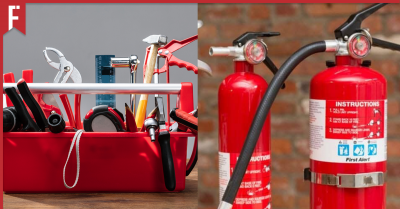
Over the past few decades, we have seen an improvement when it comes to the role women play in various fields. Whether it’s being the CEO of a company or just having the ability to choose your field of study, women have definitely found a way to make their mark.
Regardless of that fact, it is still true to this day that there are a lack of women present in some fields. This issue is often overlooked, and it got me thinking, maybe no one even noticed that it is still an issue?
While women have been working so hard to break the patriarchy present in the working world, it seems like this is yet to happen in the STEM field. With the ratio of men to women in this field having such a big gap, it really makes us wonder what’s making women stray away from STEM?
The Approach To STEM

When there is an issue that needs to be resolved, the best thing to do is to look for the root cause of the problem.
A lot of our goals and aims are driven by the education we receive, and the environment that we are presented with. At least this fact is true for me, personally. If I had a lecturer who tried their best and encouraged me to pursue that field, I would find myself more inclined to do so.
Therefore, to get to the root cause of this issue, we need to start from the very beginning. Are girls getting the education and the encouragement required to get into the STEM field?
While the approach used is clearly very important, a study showed that Malaysia has gender inequality when it comes to education. This possibly has a direct effect on the number of girls pursuing the STEM field.
Chan Yen Sze, the R&D Operations leader for 3M Malaysia noted that while the approach towards both genders is the same, the bigger issue might be the stereotypes that are present in the society.
“We unconsciously or consciously convey social cues to children that may influence their choices, which in turn contributes to the development of their skills in certain areas”, she said.
“Girls are generally more encouraged to participate in playing with dolls and dress up, while boys are steered towards task-oriented play and big motor functions like building”.
This has been a topic that has been argued over ever since I can remember. Why do we always associate girls with playing the housewife role with activities such as “tea parties”, while boys get to play with building blocks? Are we not worthy of critical thinking skills too?
Let’s Talk About These Gender Stereotypes

While corporate workplaces are striving towards creating equality within the workplace, it is important to highlight the stereotypes that are still present to this day.
Stereotyping obviously starts at an early age. It is something that has been present in our society for as long as we can all remember. When we think about fields like STEM, we always think it’s more suitable for men.
Things we throw around for laughs such as ‘I can do all the cooking while he can do all the “manly” work around the house’ are part of how we are feeding into such cultures. The ‘manly work’ that we often refer to would include fixing and building things. Why do we associate these things with men rather than women?
Such stereotypes heavily influence why women don’t opt to go into the STEM field. The fear of being isolated in a male-dominated industry already sounds bad enough. But we must do better as a society than to isolate women in these industries. We need to give women the encouragement and the push they need to know they are not alone in this battle to break the stereotypes!
“To tackle this, we need to shift the perception that heavily male-dominated STEM careers are not suitable for women”, said Yen Sze.
“These stereotypes have serious consequences and is one of the reasons why STEM is not as accessible to women as it should be”
Women often have to work hard to prove themselves in their workplaces. This often comes from a place where men are perceived to ‘just be better’ at performing some tasks than women.
“I remember when I was a young engineer, I recall finding myself in a situation where I needed to do a product demo for our abrasive disc to our customers.”
“They all looked at me with concern and doubt in their eyes but sure enough, after I completed the product demo, their faces changed, and I could see that they were impressed,” said Yen Sze, regarding her own experience with having to break gender stereotypes.
Making The Workplace Better For Women

One of the biggest struggles women face in any workplace is the differentiation — whether it is in the tasks that they are given or the wage gap.
It is no secret that in all corners of the world there is a significant wage gap between men and women, even Malaysia.
Statistics show that even with an increase in overall wages in Malaysia, the wages for male employees have been higher than females consistently except in 2016.
While this can be disheartening when it comes to any field, this is an added burden on women who want to go into STEM.
It’s hard to imagine fighting gender stereotypes in a male-dominated company while also getting paid less. It’s not like women don’t contribute as much as men, so why are we being subjected to lesser pay?
“Beyond the fact that gender stereotypes play a role in the lack of women in the STEM’s field, employers also play an important role in creating working environments that are conducive for women in order to retain valuable talent,” said Yen Sze.
She noted the importance of having a working environment that is diversified in terms of gender and culture, while also noting the importance of acknowledging people for their talent and performance.
“It is important for employers to create a conducive working environment; this shows the importance of celebrating diversity and inclusion in the workplace as it empowers your employees to perform at their best regardless of their gender, or background”
If all workplaces took this kind of approach to their employees, it might just help reduce the gap that is present in terms of wage and inequality.
Other than this, we can take initiative to encourage kids to get interested in STEM from a young age. One of the best ways we can do this is by enrolling kids to programmes such as Science at home, Friends of STEM or STEM Academy.
It can even be as simple as showing young kids interesting experiments that can be done at home along with their siblings or parents. Sometimes these small efforts can really go a long way.
Girls Need Good Role Models Too
We are all motivated and driven by different factors, but having someone to look up to plays a big role in pushing kids to pursue things.
Personally for me, growing up I heard about Malala Yousafzai and the struggles she went through. The effort she made to pursue an education that I took for granted pushed me to study harder than ever.
I have Malala to look up to, but let’s talk about some female figures in the STEM field that young girls can look up to.
We have strong women in the STEM field like Dr.Jayshree Seth, Corporate scientist and chief of science advocate. Dr.Seth has even recently accorded the WE20 achievement award.
We also have Dr. Chan Yoke Fun, the head of the department of medical microbiology at the University of Malaya’s Faculty of Medicine. Dr. Chan focuses her research on developing a vaccine to combat a virus that causes hand, foot and mouth disease and brain infection in children.
Honestly, if I were to keep writing a list, I’m pretty sure it would go on for a while. There are so many notable women in the STEM field. They just need to be talked about more so that they can get the recognition they deserve and be seen as role models for the younger generation.
In order to break the gender stereotypes and male dominated work-fields, we need to recognise the contribution women are making to society. Recognising the work that they do and making them role models for the younger generation could easily make a huge difference. This really could be the driving force behind women breaking the glass ceiling and really making their mark.








